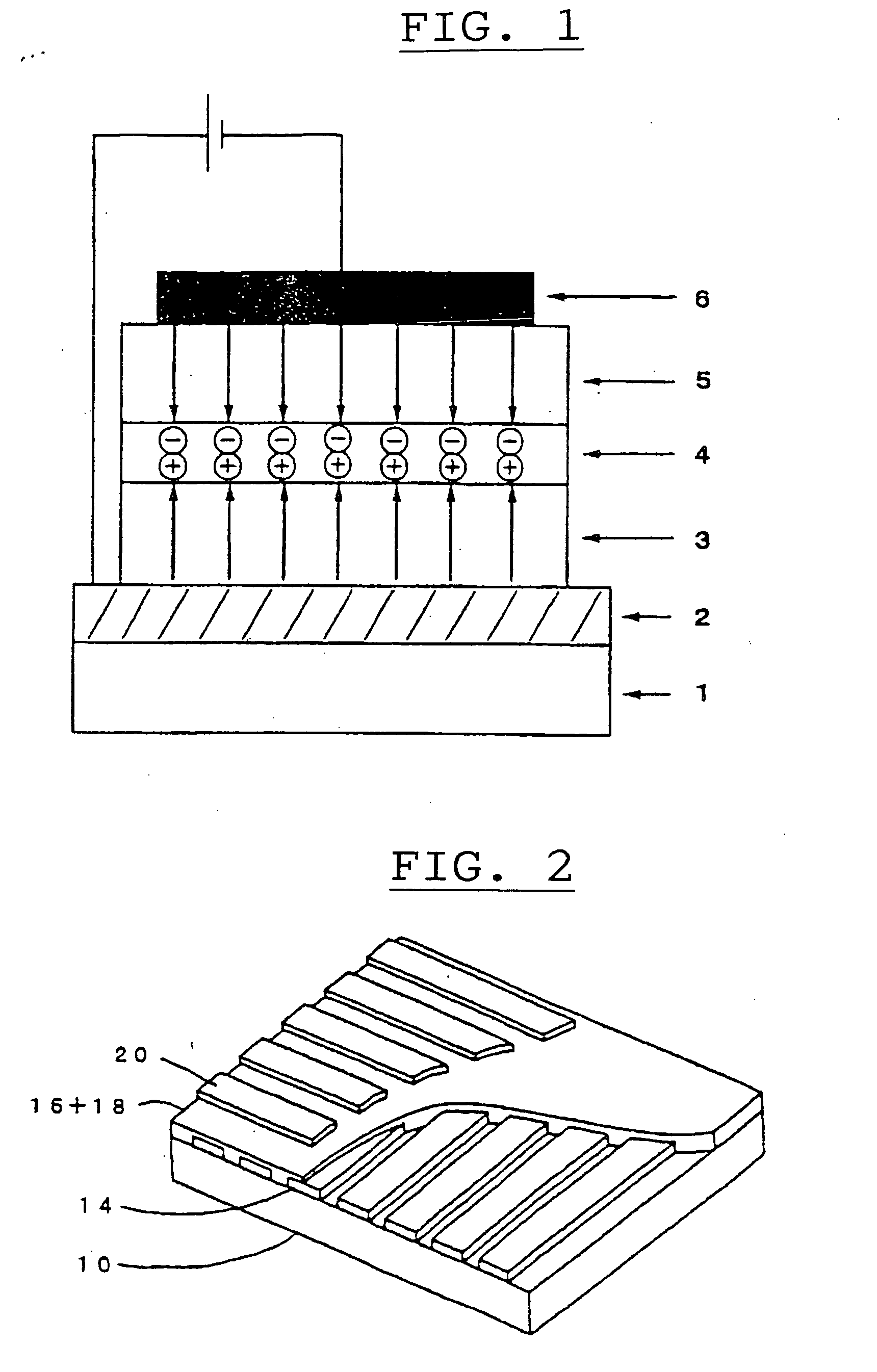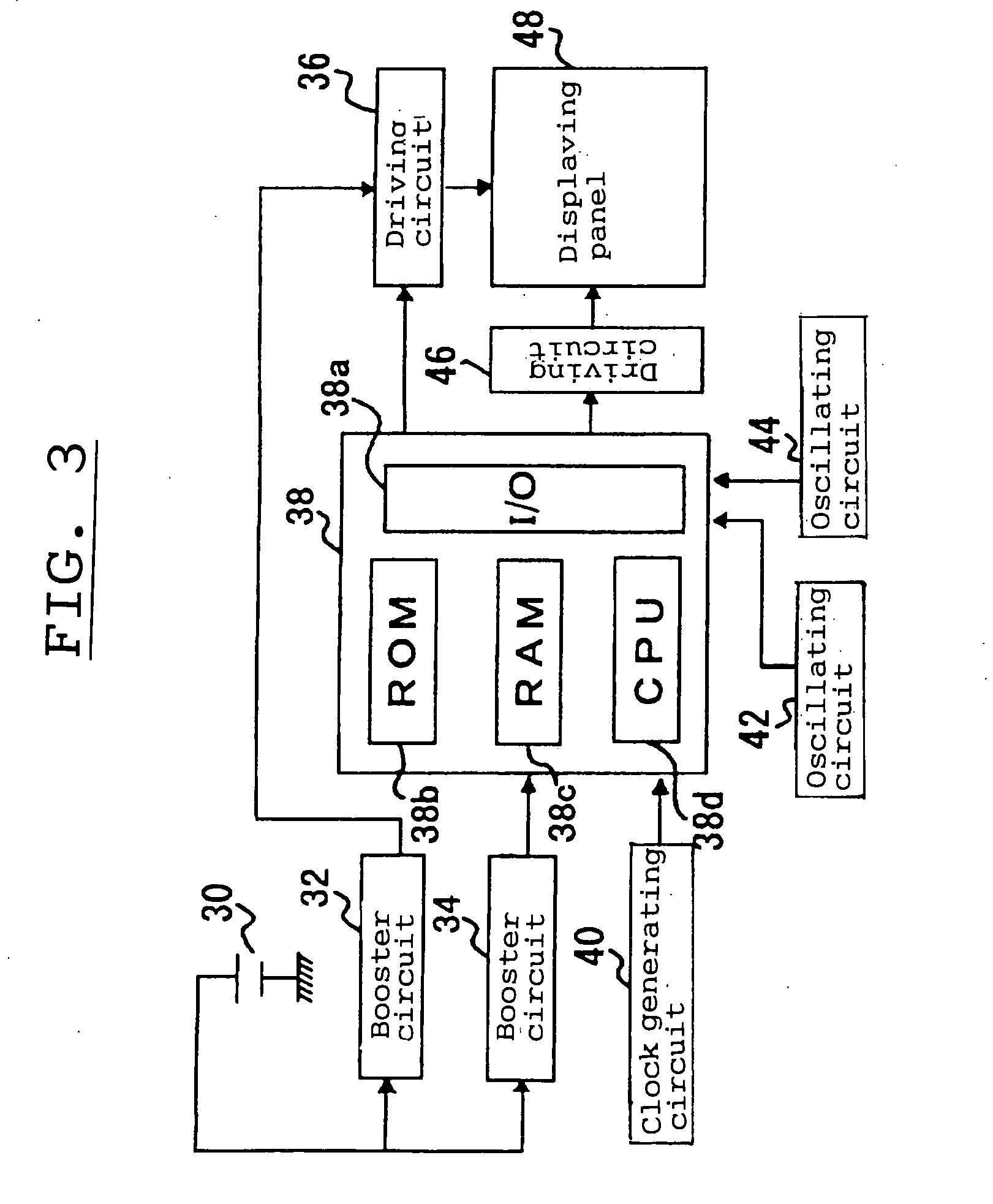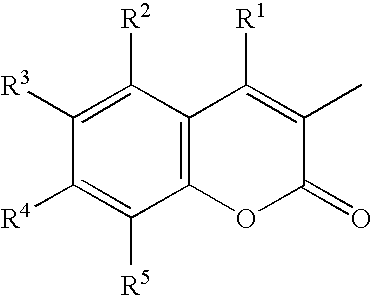Coumarin compound
a technology of coumarin compound and compound, which is applied in the field of new products, can solve the problems of affecting the applicability of cathode-ray tubes, affecting the use of commonly used equipment, and relatively high operation voltage, and achieves the effects of reducing the amount of solvent used, reducing the number of solvents used, and avoiding the formation of by-products
- Summary
- Abstract
- Description
- Claims
- Application Information
AI Technical Summary
Benefits of technology
Problems solved by technology
Method used
Image
Examples
example 1
Coumarin Compound
[0063] An adequate amount of xylene was placed in a reaction vessel, followed by dispersing therein 3.86 g of N,N-diethylaminosalicylaldehyde and 1.56 g of m-phenylenediacetonitrile. Adequate amounts of acetic acid and pyridine were added to the above mixture under stirring conditions and dissolved by heating, followed by reacting the mixture for two hours under heat refluxing conditions. Thereafter, the reaction mixture was cooled to ambient temperature and admixed with an adequate amount of methanol, followed by collecting the formed crystals and recrystallizing them in a mixture solution of chloroform and methanol to yield 3.73 g of a pale yellow needle-like crystal of the coumarin compound, represented by Chemical Formula 1, according to the present invention.
[0064] A portion of the crystal was. sampled and measured for visible light absorption spectrum and fluorescent spectrum in methylene chloride in a usual manner, revealing to have an absorption maximum at...
example 2
Coumarin Compound
[0066] Except for replacing N,N-diethylaminosalicylaldehyde with 3.65 g of 4,6-dimethoxysalicylaldehyde, the reaction of Example 1 was similarly proceeded, resulting in a yield of 0.5 g of a pale yellow needle-like crystal of the coumarin compound, represented by Chemical Formula 4, according to the present invention.
[0067] A portion of the crystal was sampled and measured for visible light absorption spectrum and fluorescent spectrum in methylene chloride in a usual manner, revealing to have an absorption maximum at a wavelength of around 354 nm (ε=4.63×104) and a fluorescent maximum at a wavelength of around 436 nm. When measured for melting point, glass transition point, and decomposition point on conventional DSC analysis, the coumarin compound of this example had a melting point of 307 to 312° C., a glass transition point of about 116° C., and a decomposition point of about 412° C. According to conventional manner, the coumarin compound was measured for 1H-nu...
example 3
Coumarin Compound
[0069] Except for replacing m-phenylenediacetonitrile with p-phenylenediacetonitrile, the reaction of Example 1 was similarly proceeded, resulting in a yield of 2.0 g of a yellow crystal of the coumarin compound, represented by Chemical Formula 21, according to the present invention.
[0070] A portion of the crystal was sampled and measured for visible light absorption spectrum and fluorescent spectrum in methylene chloride in a usual manner, revealing to have an absorption maximum at a wavelength of around 425 nm (ε=7.68×104) and a fluorescent maximum at a wavelength of around 495 nm. When measured for melting point, glass transition point, and decomposition point on conventional DSC analysis, the coumarin compound of this example had a melting point of 297 to 310° C. and a decomposition point of about 419° C., but had no glass transition point. According to conventional manner, the coumarin compound was measured for 1H-nuclear magnetic resonance spectrum (hereinaf...
PUM
| Property | Measurement | Unit |
|---|---|---|
| decomposition point | aaaaa | aaaaa |
| wavelengths | aaaaa | aaaaa |
| wavelengths | aaaaa | aaaaa |
Abstract
Description
Claims
Application Information
 Login to View More
Login to View More - R&D
- Intellectual Property
- Life Sciences
- Materials
- Tech Scout
- Unparalleled Data Quality
- Higher Quality Content
- 60% Fewer Hallucinations
Browse by: Latest US Patents, China's latest patents, Technical Efficacy Thesaurus, Application Domain, Technology Topic, Popular Technical Reports.
© 2025 PatSnap. All rights reserved.Legal|Privacy policy|Modern Slavery Act Transparency Statement|Sitemap|About US| Contact US: help@patsnap.com



